In today’s times, almost every other person uses or has used an elevator. But very few actually think about the safety risks involved. In the US, approximately 31 elevator-related fatalities occur per year. And surprisingly around 50% of elevator-related deaths involve workers.
But that doesn’t explain why elevators are dangerous. Elevators are generally safe if used properly. So whether you’re an elevator user or an elevator repair worker, in this today’s guide, you’ll learn about the essential elevator safety tips that you should know to keep yourself and others safe.
Elevator Safety Tips for Passengers
As a passenger, you should not just wait for the lift and get inside or exit; rather, you should always stay attentive and be ready for anything. Because no doubt elevators are safe, but your minor carelessness can put you or your loved ones in danger.
You may have also noticed that most accidents in elevators occur while: rushing when doors are closing or trying to stop doors from closing. Fortunately, you can avoid such incidents. In the few next sections, we’ll discuss a complete elevator safety checklist that helps you stay safe.
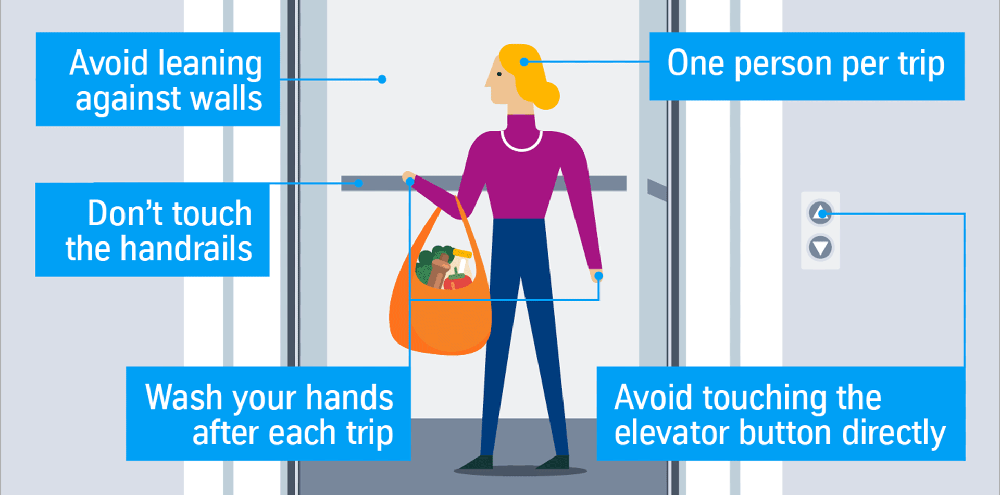
Elevator Safety Rules Every Passenger Should Know
While Waiting for the Elevator
- Stand aside from the doors: You should never obstruct front of the door. Instead, always wait at a safe distance from the elevator doors. Even better is that you stand aside of the door so exiting passengers can easily pass.
- Let others exit first: Most people, when in a hurry, do the mistake of going in while passengers are exiting. You should actually allow the elevator’s passengers to exit first before you try to enter.
- Don’t force the doors open: You should also never stop the doors from closing with your hand or foot. This can be extremely risk for you.
- Avoid horseplay or distractions: Stay calm and avoid running near the elevator. Even if you are with kids, you should stand aside the elevator, especially if you’re in commercial buildings.
- Use elevator safety signs and indicators: Never ignore safety signs placed along with elevator. If you see “Under Maintenance” or “Out of Order” signage, know that they’re placed for a reason. And you shouldn’t use the elevator.
When Entering the Elevator
- Wait for a complete stop: Only enter the elevator once it has fully arrived and the doors are fully open. You should also avoid entering unless all exiting passengers comes out.
- Check floor alignment: Make sure the elevator is level with the floor. If it’s uneven, don’t use it and even stop others from doing so. And report the issue to building staff.
- Avoid overloading: Every elevator has a different weight capacity. So you must check the elevator’s maximum weight capacity, before entering. Instead, wait for the next lift to arrive.
- Move luggage or carts with caution: If you’re carrying large items, make sure they don’t get stuck between doors.
During the Elevator Ride
- Move to the end of the elevator: If you’re the first to enter the elevator, it’s practically safe to stand at the end of the elevator. Standing at the start may cause trouble for others to letting in and even exiting.
- Stand facing forward: While you’re onboard, stand still, hold the handrail and avoid moving or jumping inside the elevator.
- Use emergency buttons when needed: If something wrong happens inside the elevator, you should immediately press the emergency alarm button. You can also press the intercom button to contact for help.
- Stay calm in case of power failure: Although elevators are equipped with emergency power and communication. Still, if power failure occurs, don’t panic or try to escape on your own.
- Be respectful and supportive: Most people fear or feel uneasy inside the elevator. If you encounter someone in such a state, be kind towards them. You can even reassure them and ask them to relax.
When Leaving the Elevator
- Exit promptly and carefully: Once the doors open, leave without waiting for others.
- Step over the gap carefully: While exiting, step carefully over the small gap, even if it’s minimal between the elevator and the floor. Especially if you’re with kids, ensure that they don’t stuck something inside the gap.
- Assist others if needed: Whenever you see and if possible, you should always help elderly, disabled, or passengers with strollers to exit safely.
- Report any unusual behavior or issues: While exiting, if you notice jerky movements, misaligned floors, report about the fault to concerned department immediately.
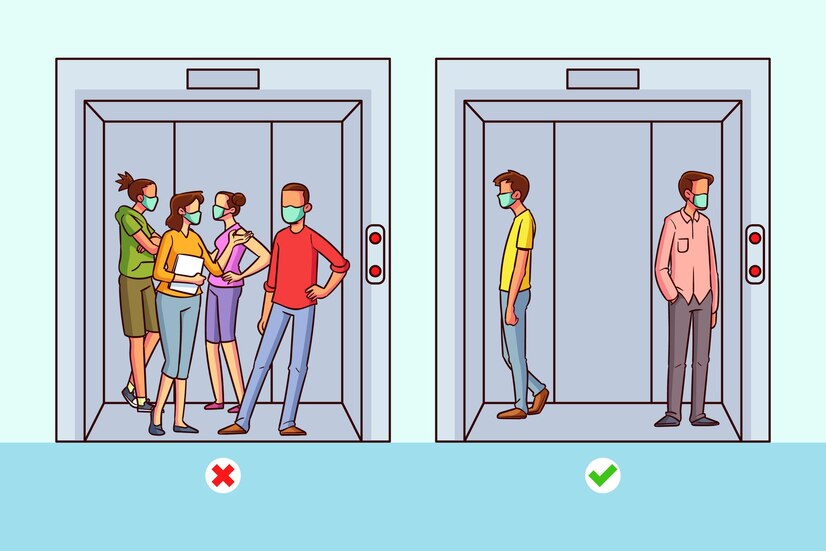
Elevator Safety Features Designed For Passengers’ Safety
Elevators are equipped with several smart elevator safety features to keep you safe and prevent elevator accidents. Let’s now learn about a few elevator safety devices:
- Automatic Door Sensors: As the name suggests, these sensors detect your movement near the doors. Upon detection, they keep the door open. And when not detected, they close the door.
- Emergency Alarm Button: You may have already seen this inside the elevator buttons area. This button basically lets you signal for help (in case of an emergency).
- Overload Sensor: As per the elevator safety factor, this sensor basically manages between expected to maximum load capacity. This restricts the elevator from working when it detects an overloaded weight. And as soon as the extra weight is reduced, elevator works fine.
- Emergency Stop Button: You can use this button to manually stop the elevator if you notice something wrong.
- Two-Way Communication System: Most elevators now also have this system. By using this two-way or intercom system, you can speak with emergency personnel inside the building from inside the elevator.
- Speed Governors: These devices actually control the elevator’s speed. If it moves too fast, the governor triggers the safety brakes.
- Safety Brakes: This system on the other hand, automatically activates to stop the elevator if it falls or travels outside its normal speed range.
In addition to the above, KONE elevator safety features includes more advanced safety features. Such as overspeed governors, emergency brakes, and door safety systems like light curtains and sensors.
What is the Safety Factor of Elevator?
The safety factor of an elevator means how much additional weight an elevator system can withstand verses its expected capacity. Generally, it is typically 12 times the rated load.
In simple words, if an elevator is rated to carry 1,000 kg (or 2,200 lbs), the supporting steel cables, which might used for an elevator may hold up to 12,000 kg (or 26,400 lbs).
Elevator Safety For Kids
We all know that children are naturally curious and smart technologies or gadgets fascinates them. But for parents, like you, must teach them basic rules of elevator safety for children.
NOTE: You should never allow your child (under 12 years of age) use the elevator alone. Always accompany them and teach them with your actions.
Below we’ve summarized a list that you should teach your kid:
- Wait for others to exit first before entering.
- Stand back from the doors while waiting.
- Hold a parent’s or guardian’s hand at all times.
- Avoid pressing elevator’s buttons. Only press your floor button.
- Teach them that in case of an emergency, use emergency button or phone.
- Never jump, run, play or push someone inside the elevator.
- Keep hands and fingers away from the door edges.
- While exit, only exit in a order. Don’t rush while exiting.
Tip: We suggest you that teach your child about elevator etiquette and rules by showing them YouTube videos. When they observe real-life scenarios, they learn quickly and remember for long.
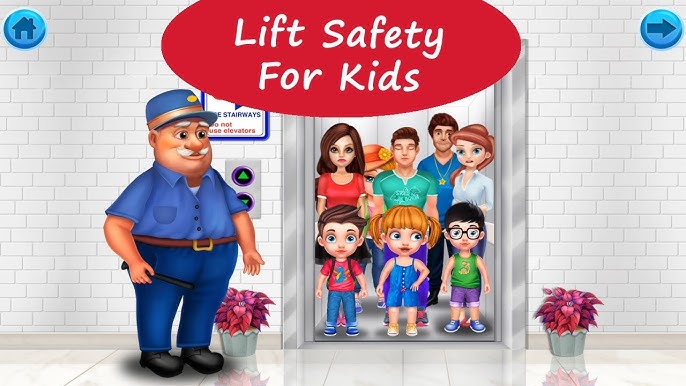
Elevator Safety Guidelines
What to Do If You Get Stuck in an Elevator?
If you get stuck in an elevator, first don’t imagine something bad might happen to you. Just stay calm, don’t panic and take deep and relaxed breaths.
The next thing you should do is press the emergency button. If there’s the intercom or messaging system, use that to send the emergency signal to building management. Lastly, go and stand at the elevator’s rear and wait patiently for help to arrive.
Also, check if anyone mobile device has signal inside the elevator, use the phone to call building security and tell them your exact location.
Emergency Situations When Not to Use an Elevator
There are certain emergency situations when you should never use an elevator. Because doing so will only put your safety at serious risk. Here’s when you should avoid using elevators:
- During a fire: In such times, elevators generally lose power or stop working. So in such a situation, you should use the stairs instead.
- In case of a power outage or lightning storm: Certainly elevators won’t properly operate during power fluctuations. So in such a case, never use elevators.
- During earthquakes or seismic activity: In such cases, elevators are not stable during ground movement. You should use emergency stairwells instead.
- Flooding in the building: Water can damage elevator systems. So even if you see a lot of water spilling around or inside the lift, it’s recommended to not use elevator. As doing so cause electric shocks or failure.
- When a maintenance sign is posted: Signs are placed to inform you. So, when you see a repair or maintenance sign, never enter an elevator.
Shocking Elevator Safety Facts
- Studies show that elevators are 20 times far more safe verses stairs (if used properly).
- About 50% of elevator-related deaths occur to workers during repair work.
- Over 18 billion elevator trips happen each year in the U.S.
- The doors are the most common injury point. Because many elevator-related injuries happen due to fingers or objects getting caught in doors.
- If an elevator exceeds its weight limit, it won’t move unless extra weight (means passenger) exit.
- Kids, especially, are more prone to door and entrapment injuries.
- Passenger behavior plays a big role in elevator safety. Because most non-technical incidents happened due to human error. Such as rushing or forcing the doors.
Elevator Safety Tips for Workers
In the U.S., 50% of all elevator-related accidents happen to workers. And the underlying reasons are mostly falling into elevator shafts, electric shocks, and injuries from falling objects.
As an expert elevator repair worker, you might already be aware of the potential dangers. So you must ensure that you perform tasks only when you know how to actually do the task and have all the safety tools available at the worksite.
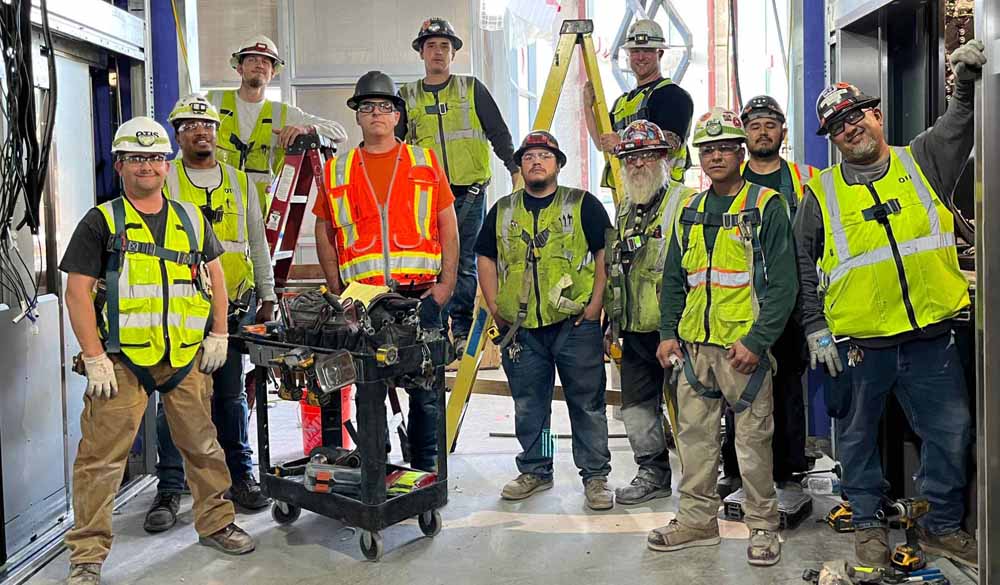
Elevator Safety Training
In some states, it’s required that all elevator technicians, like you, must have taken an elevator safety course and be trained according to the practices dictated in elevator field employees safety handbook. The elevator safety handbook actually covers everything from fall protection to electrical safety standards.
In addition, here are a few guidelines that you must follow:
- Always wear personal protective equipment (PPE): When you’re at worksite, you must always wear PPE. This involves helmets, gloves, steel-toed boots, safety harnesses, eye protection glasses, and safety vest.
- Disconnect Elevator Power Connection: Before performing any repair or maintenance, power off the elevator power supply from its power source. Because failing to do so can pose electrical or accidental risk.
- Inspect tools and safety equipment before use: Ideally, before going to the worksite, you should check all the tools, PPE and other safety gadgets for damage or wear. That way, you’ll be able to replace them beforehand.
- Be aware of shaft and pit hazards: Shaft area is very risky. That’s why you must always use guardrails and enter with fall protection. You should also place safety barricades around open shafts so that no one else got into danger.
- Communicate with your team: You should always notify team members of every step. Like when starting or finishing a task, especially in confined or high-risk spaces.
- Use warning signs and barricades: While doing elevator maintenance work, you should restrict unauthorized entries. For that, as per OSHA elevator regulations, you should place proper elevator safety barriers, elevator safety fence, and warning signs around the work area. These equipments alert building occupants that working is ongoing so they cannot enter.
- Report unsafe conditions immediately: During maintenance or repair work, if you find something wrong about any malfunction, structural issue, or missing safety feature, you should notify supervisors in the first place.
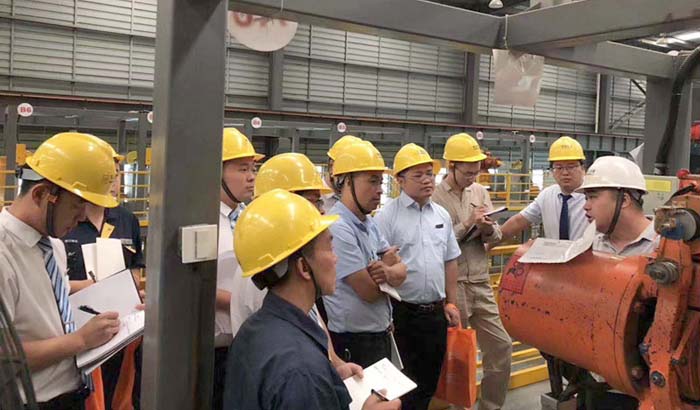
Get Elevator Safety Signs From JACKWIN
JACKWIN offers a complete range of elevator signs designed to meet OSHA, ANSI, and ISO compliance standards. Our selection includes all types of safety signs: elevator warning signs, regulatory signages, elevator caution signs, and many more. Our professional team at Jackwin can also manufacture customized elevator safety signs for your need.
Contact Us Today to get an instant inquiry!
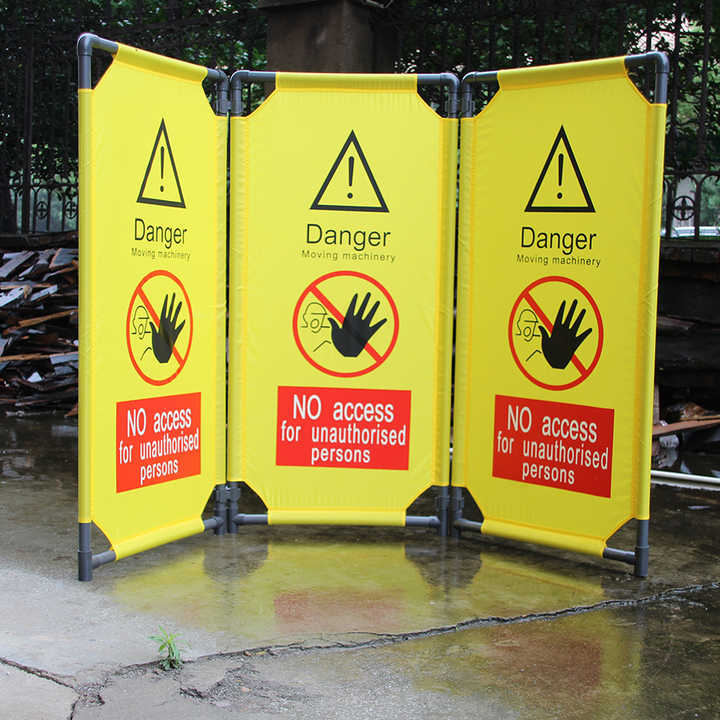
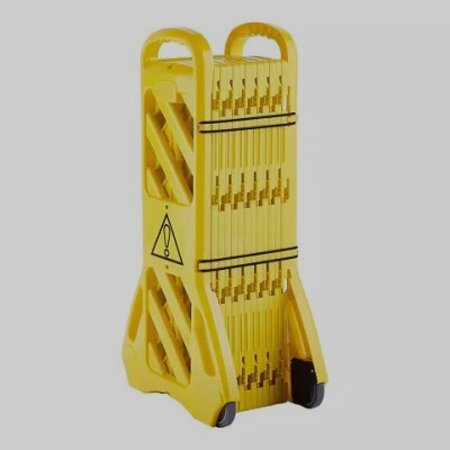
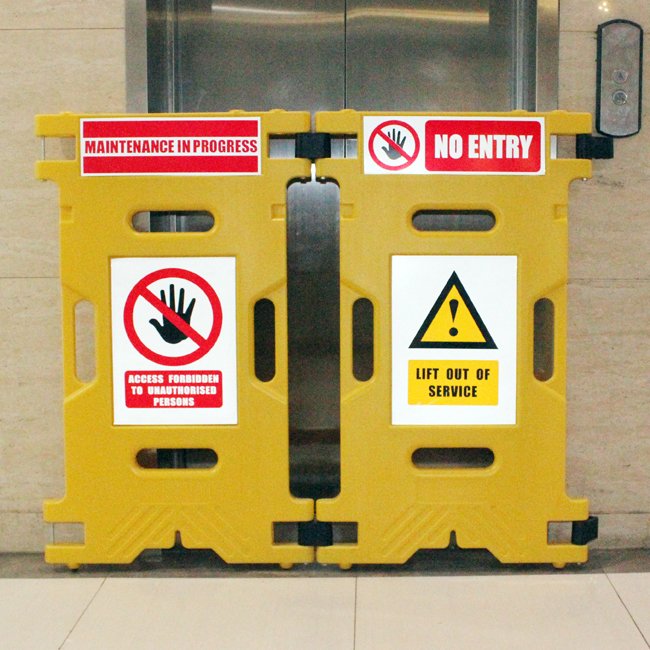

Regulation of Elevator Safety Florida
In Florida, Florida Department of Business and Professional Regulation (DBPR) manages elevator safety rules under Division of Hotels and Restaurants inside Bureau of Elevator Safety (Chapter 399). According to the Bureau of Elevator Safety regulations, here are some of the regulations:
- Buildings owners should ensure that an inspection by certified elevator safety inspector must undergo on all public-use elevators every 12 months.
- Property owners, like you, must contact licensed elevator companies to install, repair, maintain, or alter elevators in Florida.
- According to 2024 Florida regulations, in all new constructing elevators, property owners must ensure that a two-way video monitoring communication system must be installed.
- Owners must ensure that all public elevators in the buildings with ≥ six stories should be linked to one master key of elevator (for emergency situations).
- As per Chapter 399 and Chapter 61C-5, all property owners must ensure that elevators meet ASME A17.1, ASME A17.3, and ASME 18.1 standards. These standards dictate about Florida elevator’s design, construction, installation, alteration, repair, and maintenance rules.
- Owners must report any elevator-related accident to DBPR within 5 business days. Failing to do so will impose a $1,000 in fines on you.
Elevator Safety Tips For Property Owners
Choosing Right Elevator Maintenance Companies
When it comes to reliable public elevator’s performance, choosing the right elevator maintenance company is extremely crucial. Across the U.S., we suggest you find and contact the leading and trusted elevator maintenance company, although there are many.
But if you’re specifically looking for elevator installation companies in the West Coast region, there are several elevator companies in California known for their full-service packages (inspection, repair, and maintenance).
For city-specific needs, you can easily locate a trusted elevator company San Francisco or a certified elevator company Los Angeles using Google or asking someone expert.
Role of Elevator Safety Inspector in Worker Protection
As a building owner, it’s your responsibility to get elevator inspections done as per the local or state regulations on elevators inspections. For the inspections, you’ll need to contact and hire an elevator safety inspector.
An elevator safety inspector is the one who inspect, test, and verify the elevator and ensure they’re working fine and compliant with local and state standards. Inspector also looks out for elevator’s mechanical and electrical systems for faults or wear, verify if the safety devices are working fine and ensure that regular servicing is being performed.
And once the elevator passes all safety checks, the inspection inspector issues the Certificate of Operation, which is required in several states.
Conclusion: JACKWIN’s Role in Elevator Safety Tips
Studies show that elevators are one of the safest modes of vertical transportation. However, when it comes to workplace risk, elevator technicians face high risk verses passengers. That’s why it’s crucial for all technicians to wear PPE. Also, companies must provide everything workers might need.
In addition, technicians must also set up clear elevator safety barricades around work zones to protect both themselves and others nearby. For that purpose, JACKWIN safety barriers and warning signs offer the perfect solution. They last longer and are built with high-quality and durable materials.
Contact us today to place your order.


-80x69.png)

